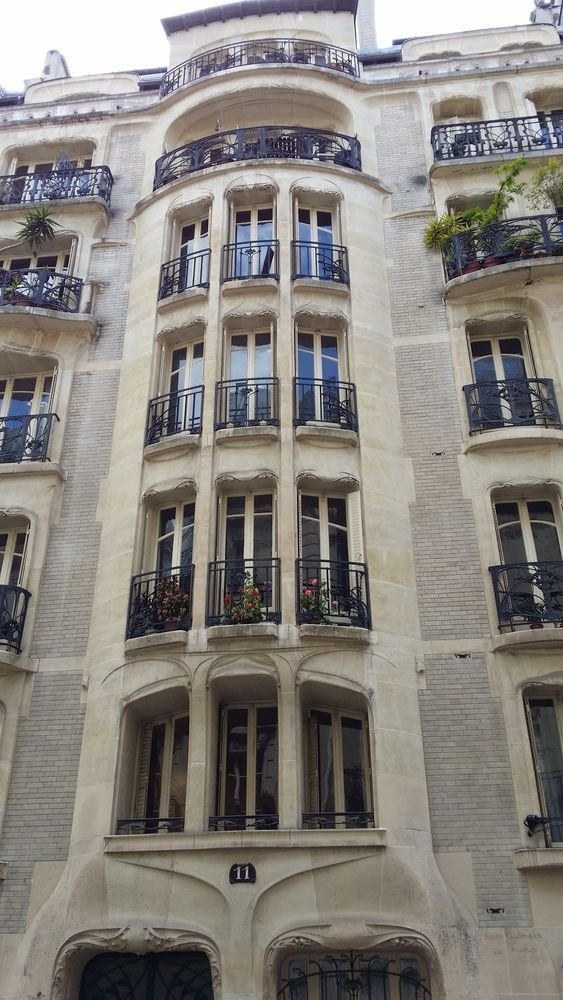#10195. Elegant facade of a Parisian Art Nouveau mansion with an expressive central bay window

Before us stands a striking example of an elegant urban mansion in the Art Nouveau style from the early 20th century, presumably Parisian. The facade of building No. 11 showcases the characteristic flowing, fluid lines and expressive plasticity of Art Nouveau. The central part of the facade features a vertical bay window that creates a dynamic silhouette and enhances the play of light and shadow.
Particular attention is drawn to the graceful wrought-iron balcony railings with plant-inspired ornaments typical of Art Nouveau. The architect masterfully combines light-colored stone with brickwork, adding textural expressiveness to the facade. The windows maintain classical proportions, but their arrangement in groups of three in the bay window creates a rhythmic pattern characteristic of the Art Nouveau style.
The ground floor with its arched openings serves as a kind of podium for the upper floors, while small consoles beneath the bay window create a smooth transition between the horizontal divisions of the facade. Living plants are visible on the balconies, corresponding to the Art Nouveau aesthetic with its gravitation toward natural forms.
For modern home building, several techniques can be borrowed from this facade: the use of bay windows to create an expressive building silhouette, combining different textures and materials to achieve textural diversity, and the application of decorative wrought-iron elements to add individuality. Even a small private home can benefit from asymmetrical composition and flowing lines borrowed from the Art Nouveau aesthetic.